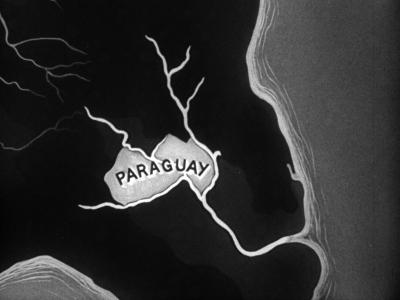Tyrone José González Oramas was born in Caracas, Venezuela, in 1988. His family moved to Maracay when he was young, and his life was informed by trauma and tragedy: his mother died when he was eight, and at 12, Canserbero's elder brother was murdered.
Canserbero began freestyling and working on reggaeton rhythms at the age of 11. In 2002, he met Black Kamikase (Manuel Galvis) and producer Afromak (Leonardo Diaz). They formed the group Códigos de Barrio, modelled after their great influences Comando 57 and Supremacy Hip Hop Clan. They played regional hip-hop concerts and eventually recorded three songs. In 2004, Canserbero met Lil Supa. The pair delivered several songs that were featured on a mixtape entitled Bas.y.Co, Base y Contenido in 2006, spotlighting emerging Venezuelan hip-hop acts. Its tracks were circulated exclusively online. The pair followed it with their own full-length, Indigos, Can + Zoo, in 2008.
Meanwhile Canserbero worked as a claims analyst in Maracay and at the University Institute of Technology Experimental Victoria. He also studied law and political science at the University Bicentennial Aragua, but as income from music came in, he left University to focus on music and social activism. In 2008, he released Guía Para la Acción as a free digital download. A year later, he followed it with the independently released gritty, imaginative album Vida. The record blew up the Internet in Venezuela as well as underground radio. He began to accrue fans abroad Spain and won him the Dixtorxión Award for Best Rap Album.
Canserbero was deeply influenced by classic and hard rock, citing influences such as Jimi Hendrix, Black Sabbath, the Ramones, Led Zeppelin, Pink Floyd, the Rolling Stones, the Beatles, and Queen. He claimed he was less influenced by rap and hiphop and started rapping ‘without knowing what it was.’ The production on his 2012 album, Muerte, underscored those influences. Considered revolutionary in its creativity, it was distributed free on his web page, where it was downloaded some 300,000 times.
In 2013 Can travelled to Barcelona, playing shows and working with Rapsusklei, Aniki, and Mala Rodriguez on her 2013 album, Bruja. Back in Venezuela, he collaborated on the album Apa y Can with Apache. The latter was produced by Baysco's Kpu (Leandro Anez).
“I had a very beautiful experience working with him," Apache later told LatinoLife. "A very easy going dude, very humble, chilled and with a great sense of humour. He was always making us laugh with his whatever crazy thing that would come to his mind. He was always sharpening his rapping skills. He introduced me to deeper readings, while we were at the studio, I used to read but not as much as him and he kinda pushed me to read more, I took him to a more spiritual side with yoga and all the breathing exercises before singing or going on stage. It was a very beautiful, a very organic relationship, nobody really pushed it and when we realised we were already touring the whole of Latin America promoting that album. Total madness.”
Canserbero toured Venezuela and neighbouring countries alongside the band Zion TPL in 2009 and as a solo act by 2014. He was advancing plans for an album, as well as playing large-scale festivals in Latin America. Neither happened. On January 20, 2015, Canserbero attended the birthday party of bassist Carlos Molnar's daughter. Molnar invited Canserbero to stay with him and his family. While there, the rapper allegedly had a psychological breakdown (his family claims he never suffered from mental problems), picked up a knife, stabbed Molnar to death, then jumped from the building to his own death. This account is widely disputed. Molnar's wife claimed to have witnessed the entire incident, but said she couldn't intervene to save her husband. She then fled the country, allegedly with $5,000 of Canserbero's money. Like with so many unexplained deaths in Venezuela, the full truth and circumstances that led to Can’s death has never and may never be known: she committed suicide a few months later.
Today Can is both remembered by the older generation and discovered by a younger one and despite releasing a limited body of work, he still generates 5.5 million monthly listeners per month just on Spotify.
"I will remember the special experience of knowing Canserbero and all the learnings. And that is his legacy." concludes Apache. "When the tragedy happened, we decided, me and my team, that every time we would go and play abroad we would include his songs, like a space for him, so every show we do there is a homage to him included."

















